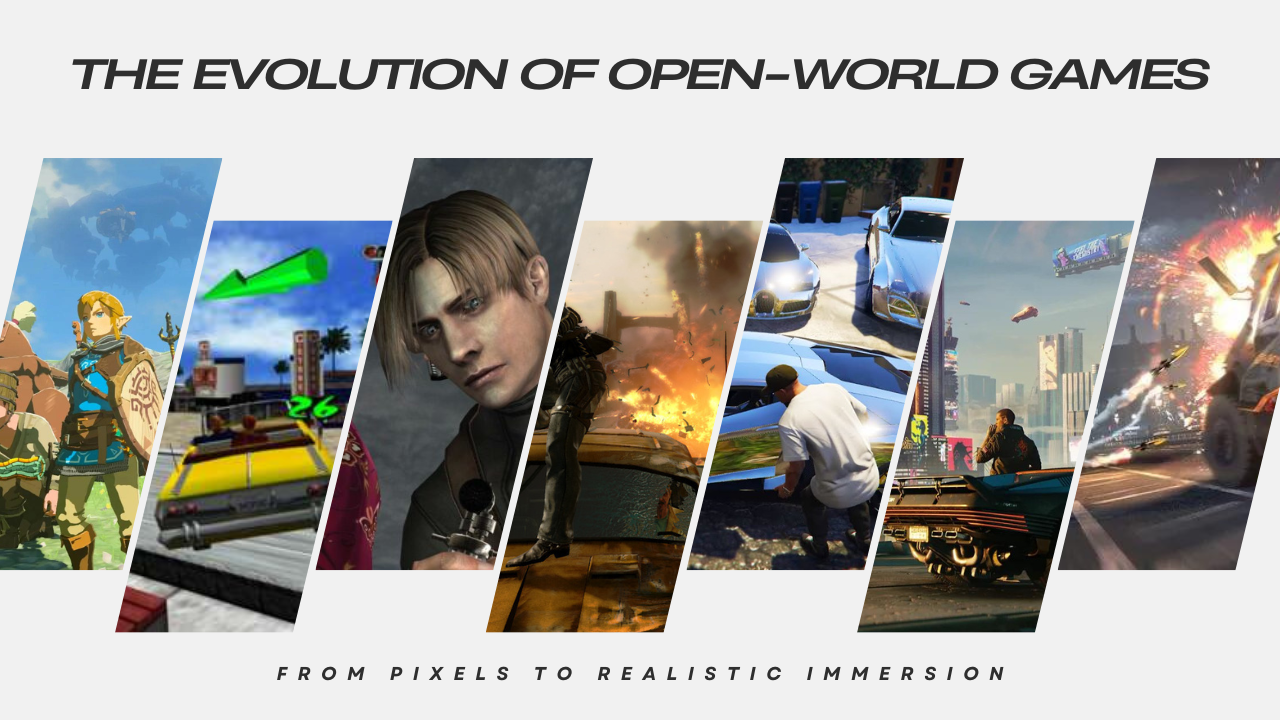Introduction:
In the vast realm of gaming, few genres have captivated players and pushed the boundaries of technology quite like open-world games. Over the years, we’ve witnessed a remarkable evolution in the way game developers create expansive, immersive worlds for players to explore. From the pixelated landscapes of early RPGs to the breathtaking, lifelike environments of today, the journey of open-world gaming is a testament to the industry’s commitment to pushing the limits of creativity and technology.Paragraph 1:
The Genesis: Early Open-World Exploration
Cast your mind back to the early days of gaming, where the concept of an open-world was a distant dream. Classic titles like “The Legend of Zelda” and “Ultima” introduced players to the idea of interconnected worlds, offering a taste of freedom within the constraints of early technology. These games laid the foundation for what would become a defining feature of modern gaming.Paragraph 2:
The Revolution: 3D Graphics and Beyond
The advent of 3D graphics in the late ’90s revolutionized the gaming landscape. Titles like “The Elder Scrolls: Daggerfall” and “Grand Theft Auto III” brought unprecedented levels of freedom, allowing players to traverse vast landscapes and interact with a living, breathing world. The shift to 3D not only enhanced the visual experience but also opened up new possibilities for dynamic storytelling and player agency.Paragraph 3:
Technological Marvels: The Rise of Realism
As hardware capabilities continued to advance, so did the realism of open-world games. Games like “The Witcher 3: Wild Hunt” and “Red Dead Redemption 2” showcase the industry’s dedication to creating visually stunning, believable worlds. With meticulously crafted landscapes, detailed character animations, and dynamic ecosystems, these titles blur the line between virtual and reality, providing an unparalleled gaming experience.Paragraph 4:
Beyond Boundaries: Emergence of Procedural Generation
In recent years, the gaming industry has embraced procedural generation as a means to expand the scale of open-world environments. Games like “No Man’s Sky” leverage procedural algorithms to generate vast, procedurally generated universes, offering players an astronomical number of planets to explore. This innovative approach ensures that no two gaming experiences are alike, adding a layer of unpredictability to the open-world formula.Conclusion:
The journey of open-world gaming is a tale of innovation, pushing the boundaries of technology and creativity. From humble beginnings to the stunning, realistic landscapes we explore today, open-world games continue to shape the gaming industry. As we look to the future, it’s exciting to anticipate the next technological leaps and creative strides that will further redefine the possibilities of open-world gaming. Strap in, fellow gamers, for the journey is far from over, and the next horizon is bound to be even more awe-inspiring than the last.
